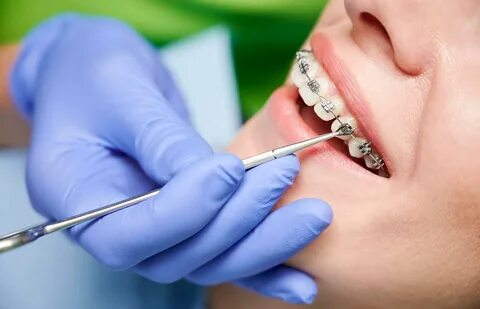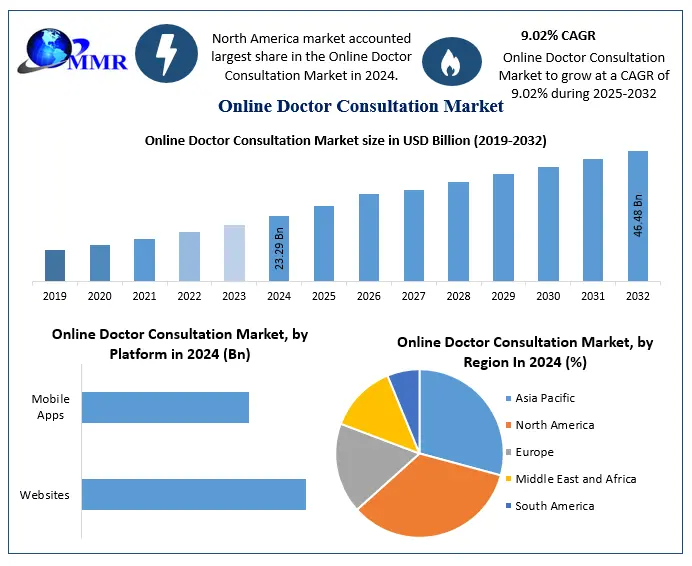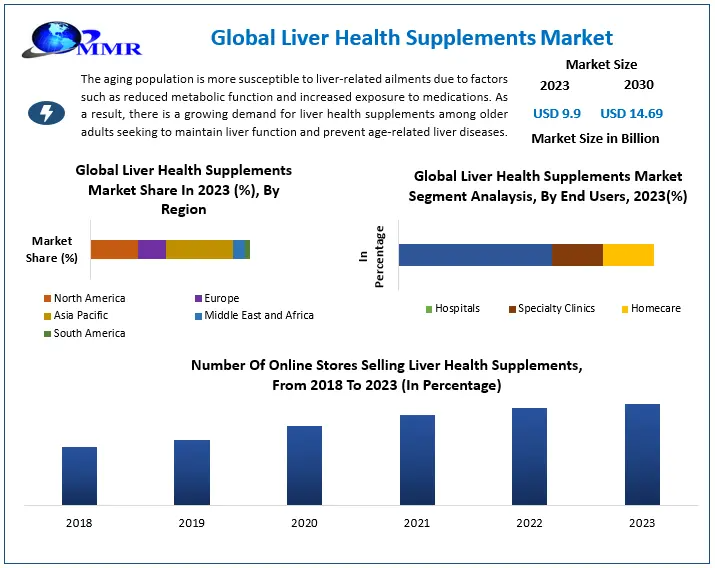Orthodontic Market Surges on Aesthetic, Technological and Demographic Drivers
Orthodontic Market, verifying strong momentum and identifying key drivers, growth opportunities, market segmentation, country-level trends, and competitive landscape. The following summary outlines major findings, investment prospects, and projected market trajectories through 2032.
Market Estimation & Definition
The global orthodontic market was valued at USD 10.56 billion in 2024 and is forecasted to rise to nearly USD 39.18 billion by 2032, reflecting a robust compound annual growth rate (CAGR) of approximately 17.8% from 2025 to 2032 . Orthodontics—a discipline focused on the diagnosis, prevention, and correction of dental and facial irregularities such as misaligned teeth and malocclusion—encompasses treatments like braces, clear aligners, retainers, and related devices.
The market expansion is fuelled by a convergence of cosmetic dentistry demand, increasing awareness of oral health, and an escalating global prevalence of orthodontic disorders. As disposable incomes grow and technology advances, more diverse treatment modalities are poised to reshape the landscape, hastening patient adoption and redefining care pathways.
Market Growth Drivers & Opportunities
Aesthetic Awareness & Cosmetic Dentistry
A growing emphasis on smiles, catalyzed by social media, celebrity influence, and general well-being trends, has propelled orthodontic solutions like ceramic braces and transparent aligners into mainstream acceptance . With approximately 50% of the population experiencing malocclusion severe enough to warrant orthodontic treatment , the cosmetic component plays a major role in market expansion.
Technological Innovation
Technological breakthroughs—such as 3D printing, AI-enhanced treatment, teleorthodontics, and advanced bracket systems—have significantly transformed efficiency, comfort, and customization. Devices like SureSmile VPro, SureSmile Retainers, and SureSmile Whitening Kits demonstrate rapid product evolution . These innovations streamline workflows, reduce chair time, and cater to consumer preferences for minimally invasive treatments.
Demographic Tailwinds
Expansion in youth and adult segments underpins substantial demand. The children & teenagers subset dominates usage, driven by early intervention strategies. Simultaneously, the adult cohort, particularly professionals and influencers, increasingly favors orthodontic solutions for both health and appearance .
Rising Disposable Income & Market Accessibility
Emerging economies in Asia-Pacific and middle-income countries are witnessing increased elective care uptake due to rising personal earnings. Clear aligners, once considered luxury, are now becoming more mainstream in countries like India .
Untapped Opportunities
Projections suggest the global market could surpass USD 44 billion by 2037, especially driven by supplies (e.g., brackets, adhesives, aligners) capturing over 57% of revenue . Teleorthodontic services, remote monitoring, and digital treatment planning present new revenue streams, especially in light of pandemic acceleration.
Why Wait? Request Your Free Sample and Start Exploring Today :
Segmentation Analysis
The following narrative provides a descriptive overview of market segmentation based on product type, end users, and patient groups:
Product Type
-
Fixed Appliances: Traditional metal or ceramic brackets, bands, tubes, and archwires drive the largest share. They offer proven efficacy and affordability.
-
Removable Aligners & Retainers: Transparent aligners (like Invisalign and SureSmile) have surged in popularity due to aesthetic appeal and lifestyle compatibility.
-
Anchorage Appliances & Ligatures: Includes mini-screws, miniscrew implants, and elastic or wire ligatures. These are essential adjuncts used to maintain pressure and tooth movement.
-
Orthodontic Supplies & Services: Encompasses adhesives (dental cement, bonding agents) and consumables forming a significant proportion of ongoing expenditures .
Patient Group
-
Children & Teenagers: Continue to form the bulk of patient volume. Preventive treatment and interceptive care are increasingly routine in early life. This segment also benefits most from school-based and insurance programs.
-
Adults: Independently motivated by aesthetics, functional improvement, and professional image. Adoption of clear aligners and shorter-duration treatments is high in this group .
End-Users
-
Dental Clinics & Laboratories: Account for over 60% of market share, reflecting hybrid care models and broad access to orthodontic services.
-
Dentist & Orthodontist Practices: Serve both local and specialist needs, with private practices adopting digital workflows and advanced devices.
-
Hospitals & Other Providers: Include oral surgery units and large scale institutions that handle complex corrective cases.
Country-Level Analysis
United States
As the world’s largest single-country market, the US benefits from cutting-edge insurance systems, a strong consumer focus on health aesthetics, and widespread adoption of advanced technologies. An estimated 4 million Americans are currently undergoing orthodontic treatment . Major innovations, such as teleorthodontic platforms and digital scans, originate here and spread globally.
Germany
Germany is a leader in Europe thanks to its robust healthcare infrastructure, regulatory support, and high disposable income. The demand for ceramic braces and clear aligners continues to grow alongside well-funded insurance reimbursement for medical-grade corrective devices.
Europe (General)
Europe closely follows North America in market share, with a preference for ceramic and lingual appliances. The region reflects public-facing orthodontic campaigns and regulatory frameworks standardizing quality and effectiveness .
Asia-Pacific & India
APAC is the fastest-growing region globally, propelled by rising standards of living, increased orthodontist density, and expanding dental tourism. India, in particular, is expected to exhibit one of the fastest CAGRs in orthodontic consumables, further shaping regional dynamics
Commutator (Competitive Comparator Analysis)
Key players such as Align Technology, Dentsply Sirona, Straumann, 3M, and American Orthodontics dominate on innovation, global reach, and supply chain capabilities.
-
Align Technology leads clear aligner subsector, continually releasing system upgrades and global marketing campaigns.
-
Dentsply Sirona enhances portfolios with clear aligner solutions like SureSmile and whitening kits
-
Straumann supplements its implant business with retainers and aligners, leveraging digital dentistry integration.
-
3M retains strong share in fixed appliance supplies with metal and ceramic bracket systems
These players deeply invest in research, M&A, and partnerships, aiming to expand capabilities in 3D printing, AI diagnostics, and remote patient management.
Conclusion
The orthodontic market is set for uninterrupted growth over the next decade, driven by strong demand for aesthetic treatment, technological enabling, and expanding access in emerging markets. With projected valuation reaching nearly USD 39 billion by 2032—and potentially USD 44 billion by 2037—opportunities abound for manufacturers, clinicians, investors, and technology providers.
Patient-centric innovation, particularly in clear aligners, teleorthodontics, digital workflows, and AI, will dictate competitive landscapes. End-user prominence of dental clinics, combined with proactive regulatory environments and insurance reimbursement, ensures a stable foundation for expansion.
Related Post
Dermal Fillers Market



